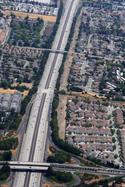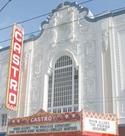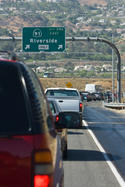Tom Daschle appears before the Senate this week for confirmation as Secretary of Health and Human Services. While Daschle knows his stuff on health care (see his book, Critical: What We Can Do About the Health-Care Crisis), the discussion is likely to be sidetracked by those who champion a reliance on insurance companies, or on piecemeal reform starting with children. Or, as I’ll discuss here, on a wrong-headed impulse to depend on the states to create new health care models. read more »
California
Daschle And State-by-State Healthcare Mistakes
Moving to Flyover Country
As the international financial crisis and the US economy have worsened, there have been various reports about more people “staying put,” not moving from one part of the country to another. There is some truth in this, but the latest US Bureau of the Census estimates indicate the people are still moving, and in big numbers. read more »
Scrap Zoning; Legalize Great Places
Crisis offers opportunity. With real estate in a freefall, there is an opportunity to lay the foundation for a more prosperous and sustainable American landscape.
If only there is the vision and political will.
What is the single most significant change that can be made in every town and city in America? One that would aid economic development, reduce greenhouse gas emissions, foster healthier lifestyles, reduce dependence on foreign oil, protect open space and wildlife habitats, and reduce wasteful government spending?
Scrapping zoning codes. read more »
Bailing out California, Again
If many of the nation’s governors have their way, the next agenda item for the spendthrift federal government could be a bailout of state budgets. According to a report issued on December 10 by the Center on Budget and Policy Priorities, 37 states face mid-year 2009 budget deficits, totaling $31.7 billion. As would be expected from its size, California leads the pack at $8.4 billion. read more »
City Planning and The Politics of Pollution
Part Two. Yesterday, in Part One, Critser discussed scientific advances in understanding air pollution. Today, he addresses the social implications.
The new science of air pollution, with its emphasis on dose-response mechanisms, may remake the traditional advocacy realm of social and environmental justice. In the past, that world has been focused on class, race and ethnicity, classic markers of inequality and vulnerability. Today, the focus is more “exposure driven.” “Dosage… may be something people who have ignored environmental justice can get their heads around,” one researcher at last month’s Environmental Epidemiology conference in Pasadena noted. “It may get people’s attention on something that affects us all.” read more »
Will The New Air Pollution Science Choke City Planners?
Part One of A Two-Part Series
Not long ago, Michael Woo, a former Los Angeles city councilman and current member of the Los Angeles City Planning Commission, took up a case pending approval by that body: a mixed housing-retail development near the intersection of Cahuenga Boulevard and Riverside Drive. Like many of the remaining buildable sites in the city, the property is right next to a roaring motorway; the windows of some apartments would look right out onto the 134 Freeway. To Angelinos, who have grown up in a car culture, it was hardly a remarkable proposal. But Woo, perhaps one of the brainier members of the city’s political elite—after losing a mayoral race to Richard Riordan in the early 1990s he became a professor of public policy at University of Southern California—had a problem with it, and he couldn’t quite let it go. read more »
"Milk" Puts New Attention on San Francisco's Castro District
The Castro District of San Francisco has found itself thrust into the national spotlight by recent events. With the premiere of Gus Van Sant’s “Milk” across the country and the continuing controversy over Proposition 8, the neighborhood so instrumental in the gay rights movement is receiving a new surge of attention – and more importantly respect – for its rich history. Yet the Castro is not a museum district; it is a living, breathing neighborhood that is changing and facing significant challenges in a down economy. read more »
- Login to post comments
California’s Inland Empire: Is There Hope in the Heart of Darkness?
Few areas in America have experienced a more dramatic change in fortunes as extreme as Southern California’s Inland Empire. From 1990-2008, the Inland Empire (Riverside & San Bernardino counties) has been California’s strongest job generator creating 20.1% of its employment growth. The area also consistently ranked among the nation’s fastest growing large metropolitan areas. However in 2008, the mortgage debacle has sent this area, which had not seen year-over-year job losses in over four decades, into a steep downturn. read more »
Sundown for California
Twenty-five years ago, along with another young journalist, I coauthored a book called California, Inc. about our adopted home state. The book described “California’s rise to economic, political, and cultural ascendancy.”
As relative newcomers at the time, we saw California as a place of limitless possibility. And over most of the next two decades, my coauthor, Paul Grabowicz, and I could feel comfortable that we were indeed predicting the future. read more »





















